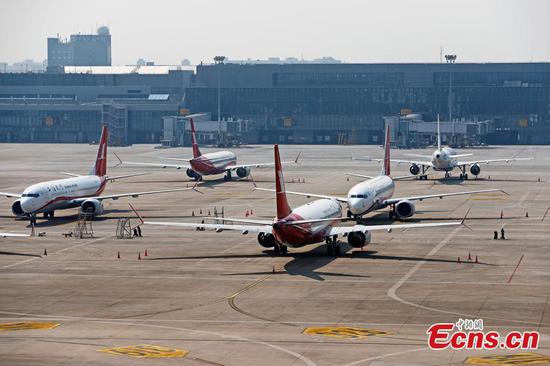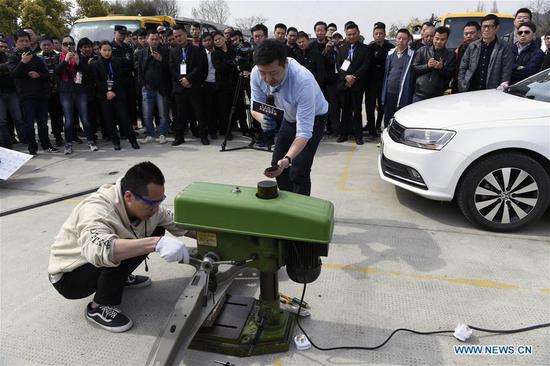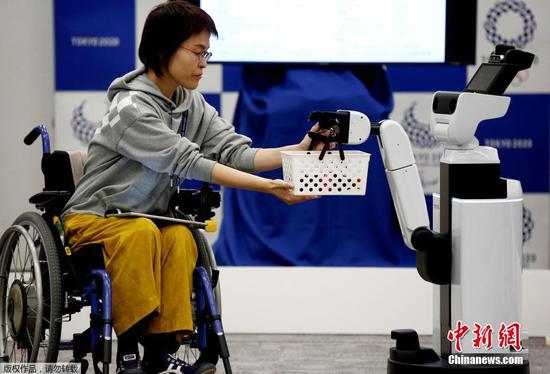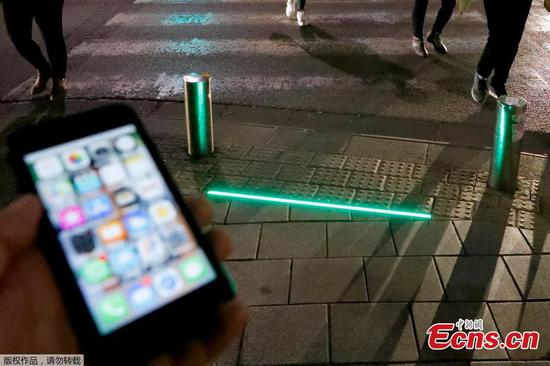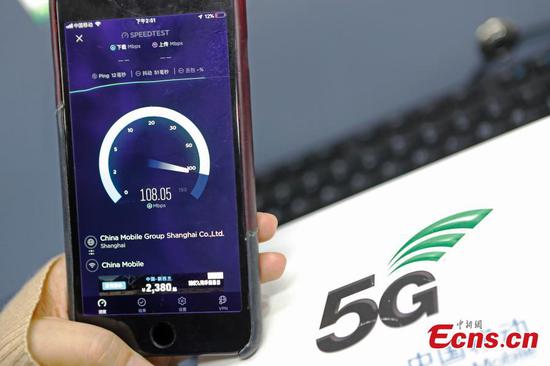
A passenger tests the 5G network and services in the Shanghai Hongqiao Railway Station, Feb. 18, 2019. The railway station, one of the world's busiest, will become the world's first "5G station." (Photo/China News Service)
If the data transmission speed of the 4G network is 10 times faster than the 3G network, then 5G is far beyond that.
It was said that 2018 was the year of 5G in China. Self-driving vehicles, high-resolution livestreaming, smartphones, remote surgeries – the entire industry is painting a wonderful future powered by 5G technology for the Chinese people.
What will happen in 2019? Will the country live up to the hype of rolling out 5G technology for commercial use this year?
Well, the answer is yes and no.
The first specification of the 5G standard – Release 15 launched by 3GPP last June heralded the manufacturing permission of 5G-enabled chips, smartphones, devices, as well as some gadgets.
Followed by the standard are the breakthroughs made by telecom operators and suppliers.
According to Xinhua News Agency, China Mobile, one of the three major telecom operators in China, has filed more than 1,000 patents in 5G technology research. Another major player, China Telecom, leads over 30 international projects in terms of 5G standard setting.
China's Huawei and ZTE, two heavyweights in the domestic telecom industry, have also done their utmost to push 5G development.
By the end of 2018, Huawei has won over 25 commercial contracts, shipping more than 10,000 base stations for 5G, according to Hu Houkun, Huawei's rotating chairman.
The destiny for the 5G network
It seems that 5G is almost in your sight. But actually, things are not as simple. A lot still has to be done before the technology becomes fully available.
Problems from hardware implementation to the financial burden of network construction are just a few of the concerns.
5G can't reach its fullest potential without the wide deployment of the necessary hardware and supporting equipment like antennas, towers and wiring.
What's more, there must be rigorous testing before the technology becomes fully available. A 5G smartphone will be a catch-22 until telecom operators are fully prepared to roll out their promised 5G network.
"China can and will have the 5G commercial applications in 2019, but not on a large scale," said Ge Qi, head of strategic engagement, GSMA Greater China.
Ge predicted that the commercial use of 5G technology is just the beginning, but the large-scale application has to wait for at least 2-3 years.
For consumers, it's likely that people will start enjoying 5G-supported services in the second half of 2019 or in 2020, he added.
In fact, 3G and 4G will not be replaced by the galloping 5G network in the short run. Instead, the deployment of 5G technology is a step-by-step process which requires efforts from the government, relevant companies and customer support.
The Internet of Things and Internet of Vehicles may be the first stage in revolutionizing the way people work, live and travel since almost everything in our daily life will be connected to the Internet.
And when it comes to the nature of the technology, that may go far beyond than just faster speed.
Communication is no longer a human privilege. Things can also "talk" to each other once they are all "online."









